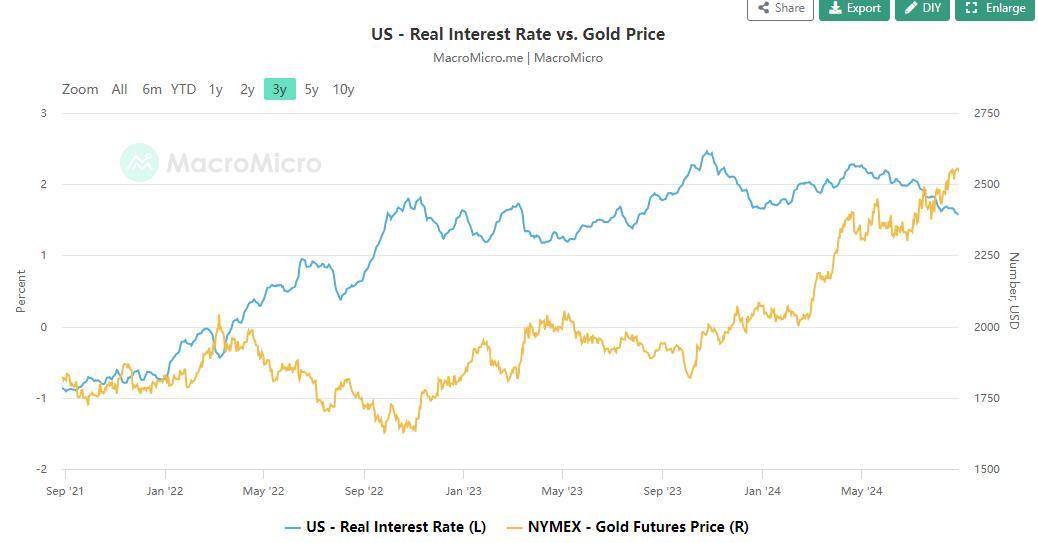The Macroeconomic Pricing Anchor of Gold: Wealth Secrets from an Investment Perspective
Gold has been a symbol of wealth and power since ancient times. In modern financial markets, it continues to play an important role.
However, the pricing mechanism of gold is not static; it evolves with the changing times. Today, let's delve into the mysteries of gold pricing and unlock the code for wealth growth.
I. Multidimensional Perspectives on Gold Pricing

Traditional views hold that real interest rates are the core of gold pricing.
But in recent years, this theory seems less applicable. The demand structure for gold is complex, with private consumption, investment demand, and official gold purchases collectively forming a diverse perspective on gold pricing.
II. The Art of Balancing Gold Supply and Demand
The supply of gold primarily comes from mined gold and recycled gold. Mined gold represents new supply, while recycled gold reflects the market's reuse of existing gold.
On the demand side, the picture is more diverse, with private consumption, investment, and central bank gold purchases collectively supporting the stability of the gold market.
III. The Three Pillars of Gold Demand
1.Private Consumption Demand: Predominantly in the form of jewelry, this demand is directly driven by wealth growth.
2.Private Investment Demand: Gold ETFs and coins/bars are chosen by investors for risk diversification and value preservation.
3.Official Gold Demand: The gold purchasing behavior of central banks in emerging economies reflects a pursuit of diversified foreign exchange reserves.
IV. Macroeconomic Patterns in Gold Pricing
From the gold price trends in recent years, we can summarize the following four patterns:
Real interest rates are not the sole pricing anchor; demand is key.
The three pillars of gold demand, each with its unique characteristics, collectively influence gold prices.
Wealth accumulation and risk aversion jointly drive gold purchasing behavior.
Short-term speculative demand is closely related to liquidity, while allocation demand is more closely linked to inflation and wealth accumulation.
V. The Uncertainty and Certainty of Future Gold Prices
Before the Federal Reserve makes substantial rate cuts, there is a certain opportunity for gold prices to rise.
Rate cuts signal a slowdown in global economic growth. At this time, the risk aversion demand from both residents and official sectors may drive gold prices up.
However, after rate cuts, the driving forces of gold demand may change, increasing price uncertainty.
Monetary easing reduces the cost of holding gold, potentially stimulating short-term speculative demand in the ETF market.
At the same time, if external monetary pressures on emerging economies ease, risk aversion demand may cool down, adding to the uncertainty of gold prices.
VI. Conclusion
The complexity of gold pricing requires a multidimensional perspective for analysis.
On the path of investment, understanding the macroeconomic patterns of gold pricing helps us grasp market trends and find our own wealth code.
Disclaimer: Community is offered by Moomoo Technologies Inc. and is for educational purposes only.
Read more
Comment
Sign in to post a comment
